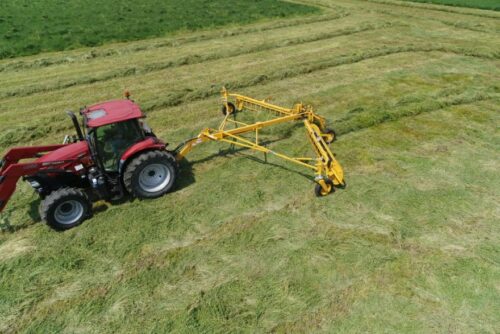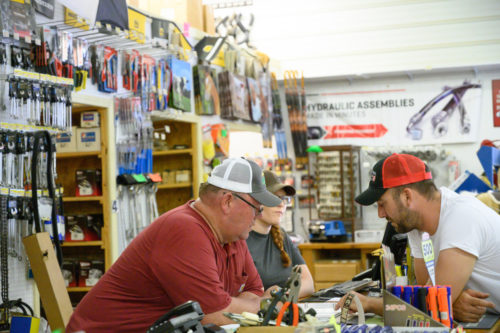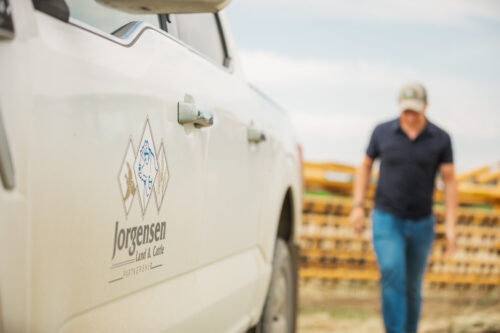
Twin basket rakes: a case study for quality and baleage
March 2019
Just about every hay producer uses a rake, and for a common purpose: to windrow hay for more efficient baling and to maximize overall per-acre output.
Yet a rake is not the most frequently replaced piece of equipment. On many operations, comfort level with a specific type of rake — regardless of how well it gets the job done — is a big reason to hold onto one. If you’ve had the same rake for years, and it continues to get the job done, you may ask yourself why you should see what else is available.
Machinery durability, efficiency, output and technology have all changed over the years, and while some specific rake types — like rotary and twin basket rakes — are historically popular in some regions, it may not always mean that those rakes are still the most effective for the job on which they’re called to do.
QUALITY AND GEOGRAPHY
In the past, geography and the type of hay produced were the two primary factors contributing to a hay rake purchase. What is your biggest priority when you are putting up hay? If quality tops the list — like producers in areas where high relative feed quality (RFQ) is necessary for sustaining market opportunities, such as with dairy customers — rotary rakes and basket rakes have historically been the top choice. A recent study done by three universities showed that both basket rakes and rotary rakes are significantly better at reducing ash content in crop compared to wheel rakes. But, all in all, both twin basket and rotary rakes do a good job handling heavier, wet hay, according to Vermeer Forage Solutions Product Manager Shawn Wang.
“Twin basket rakes are mostly sold in the Midwest, high plain and western states,” said Wang. “We see a lot more rotary rakes in the Great Lakes region and states like Wisconsin, Michigan, Pennsylvania, Kentucky and Maryland.”
Because of their efficacy in producing high-moisture and silage hay in large round bales, rotary rakes have increased popularity in certain regions. But they too have drawbacks. Rotary rakes are more expensive to purchase and own, often with higher maintenance costs. While they have advanced and evolved with new technologies and manufacturing processes, so too have twin basket rakes. The latter category offers benefits and functionality today that they haven’t in the past, making them a much stronger option for producers who have historically relied upon rotary rakes.
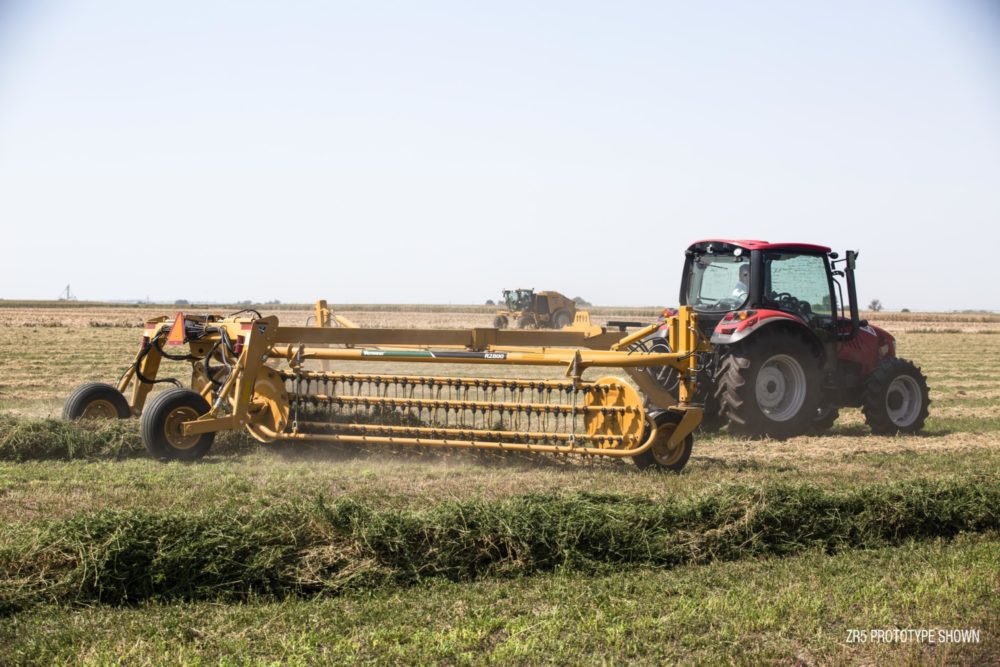
DURABILITY AND CAPACITY
How you put up hay is another factor. If you stick exclusively to large round bales, either a twin basket or a twin rotary rake will work well for you, although basket rakes tend to make boxy-shaped windrows, whereas rotary rakes tend to make dome-shaped windrows. If adjusted properly, both styles of rakes can produce fluffy and consistent windrows that are sought after by round baler operators.
“Certain styles of side delivery rotary rakes can make one large windrow or two smaller ones, so they are good for people who make large round bales as well as small square bales,” Wang said. “Some four-rotor or six-rotor rakes can also be made really wide to satisfy the capacity of large square balers or self-propelled forage harvesters.”
“Twin basket rakes have been around a long time, and some producers may be thinking about twin basket rakes from the 1980s, so it’s an unfair comparison,” Wang said. “Today’s twin basket rakes yield good, consistent windrows and have much greater speed and capacity than older ground-driven models. A lot of older twin basket rakes didn’t adjust to crop volume and type very well and may have only had five bars per basket, so they didn’t have enough crop contact to move the entire crop, whereas today’s twin basket rakes have six or seven bars per basket and a lot more capacity to move more hay much faster.”
A couple additional benefits are cost and durability; twin basket rakes can, in many cases, accomplish the same job with heavy forage crops as rotary rakes. Wang said that makes them a worthwhile option to explore, even if you’ve long been accustomed to a rotary rake.
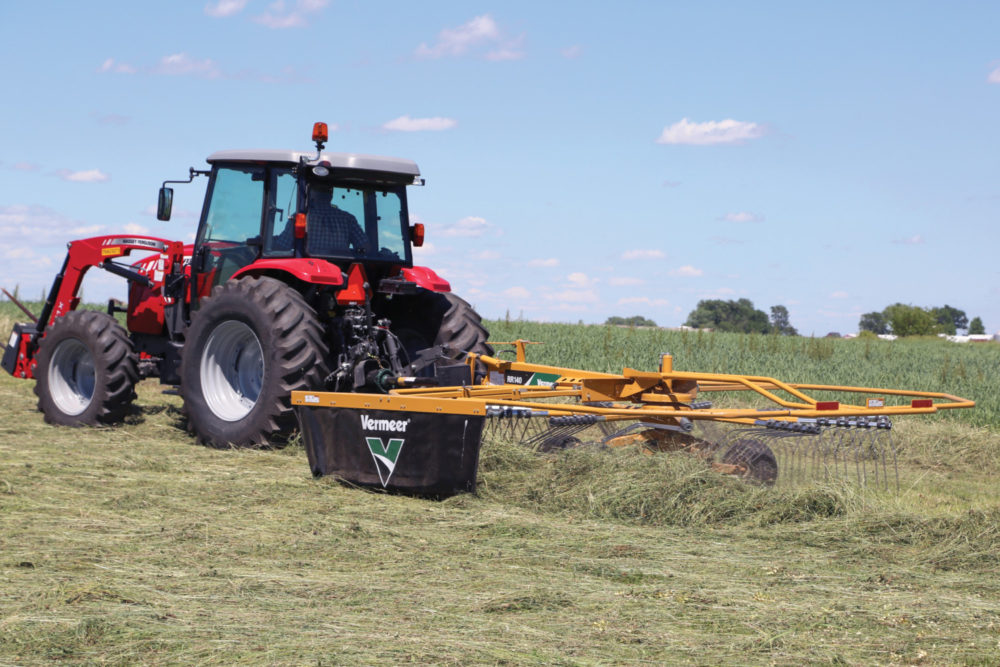
OWNERSHIP ADVANTAGE
“Maintenance costs can also be lower with twin basket rakes, and in many cases, they’re more durable,” he said.
Wang admits that although they’re “in the same league,” there are pros and cons to both rake types, and local dealership service should not be overlooked when choosing between the two. Those things being equal, Wang said he’s more inclined to recommend twin basket rakes, especially for producers looking for the same level of performance as rotary rakes at a lower cost. Also, in general we have seen twin basket rakes holding resale value exceptionally well.
“In some regions, people prefer twin basket rakes, while in other areas, they only consider a rotary rake. It’s important for producers to know that today’s twin basket rakes are not the same ones from the 1980s, so the comparison to a rotary rake is not a fair one. The twin basket rakes of today are viable options,” Wang said.
“For the many attributes rotary rakes are good for, such as capability to move wet and heavy crop, and to reduce ash content in the crop, twin basket rakes are just as good. They’re in the same league, though one or the other may be recommended by a dealer based on location and what they’re used to raking with. Today’s twin basket rakes have a lot of advancements, and I think producers should give them a fair evaluation when buying their next rake,” said Wang.
Are you looking to upgrade your hay rake? Start out by learning more about Vermeer rakes.


